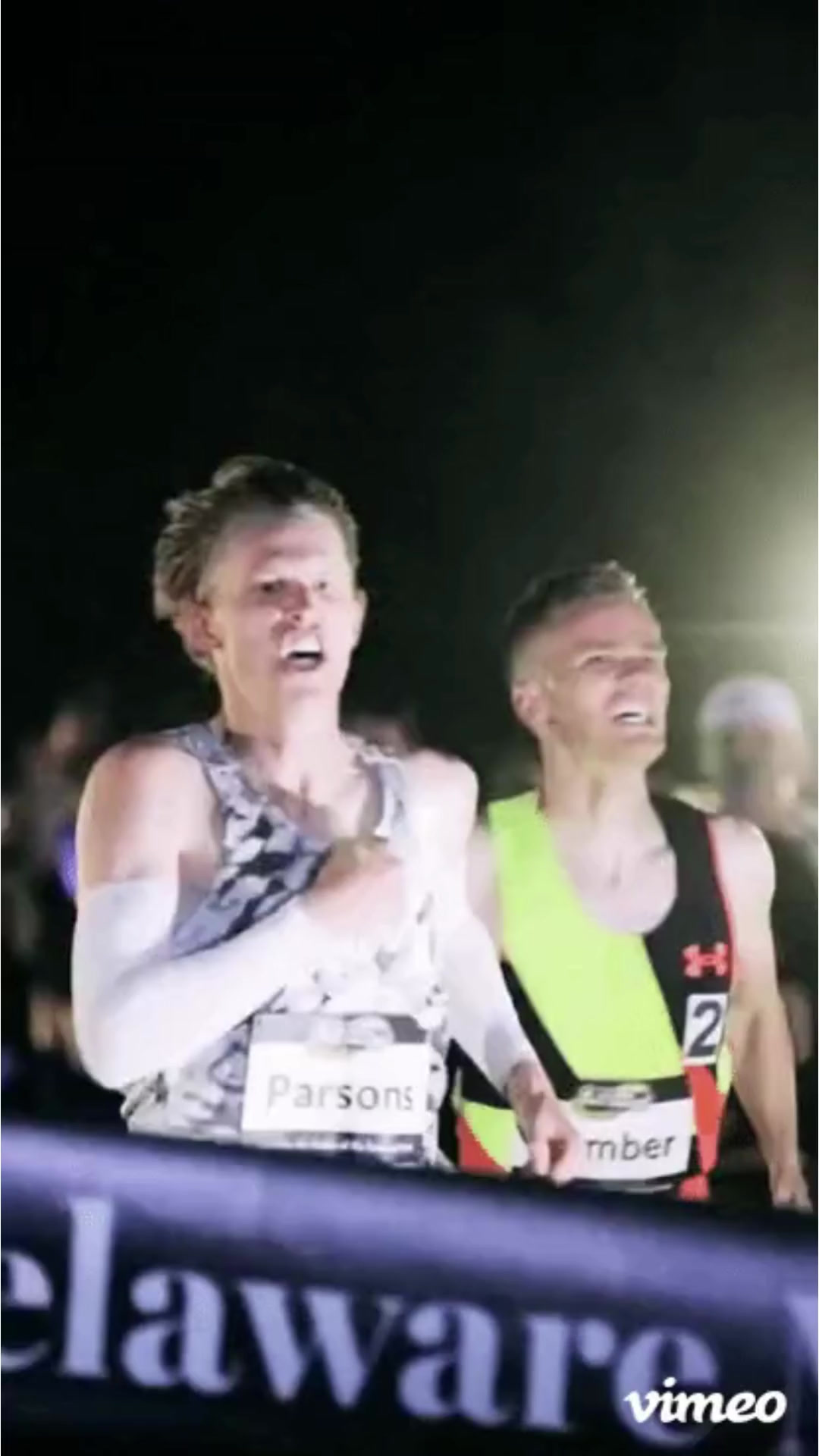Credit for this post goes to Doug, who wrote the original post for RunDNA. You can read the original post here. Some of the wording has been modified to meet the interests of our viewership.
A few weeks ago, Sam Parsons took the win at the Delaware Mile Challenge in a big way. He was the first to run a sub-4 mile on Delaware soil and this hometown hero even did it on his high school track! If you follow us on Instagram, you probably know we’ve been celebrating and riding high on such a historical running accomplishment. We’re thrilled for Sam and thought we’d share a little bit about how the RunDNA Systematic Approach helped him achieve such excellent results. This is the approach we use here at Omega Project, for amateur and elite athletes alike.
The RunDNA Systematic Approach focuses on the little things that end up being the big things. Sam spent months prioritizing the little things which wound up leading to the BIG WIN! Top running specialists know that expertise comes from doing the basics well and knowing what to prioritize for each person. Here are three simple ways to prioritize the little things in running rehab and training:
1. Prioritize mobility You don’t need to be a gymnast, but you should have basic mobility. A stiff body can never be strong or efficient! We took Sam through the Runner Readiness Assessment and gave him a 5-minute mobility plan. As runners, we want to spend most of our time running. The Runner Readiness assessment can allow us to find specific things you need to work on, so we can keep the plan short and simple as we did for Sam. You’ll be surprised by the results you see with this small change in training.
2. Incorporate strength Heavy strength training is often the missing link in a runner’s training plan. Sam was consistent with his bi-weekly RunDNA Strength Programs. Runners are often hesitant to embrace strength training, but there are many benefits of heavy lifting and working on compound movements such as squats and deadlifts. Research shows us that heavy lifting at lower repetitions builds strength and running performance and decreases injury risk.
Sam also used periodization to make sure the strength training enhanced his performance instead of taking away from it. What this means, is scheduling strength training into your training plan at the appropriate times. You may do more heavy lifting during base training than you would near a race, for example.
Once again, it can be pivotal to have a professional help you incorporate strength training into your plan for maximum benefit.
3. Efficiency matters Doing more with less is the name of the game whether you’re running a sub-4 mile or going from couch to 5K in 5 weeks. Sam intentionally works weekly on his form to make his running more efficient (after years of not really knowing how much of a difference form can make)! Additionally, we took him through the Loading Levels to identify exactly where to start him on plyometric training to make his spring more efficient.
Again, the little things are the easiest to overlook, yet have the biggest rewards. Most of us need to simplify the complexities of running because there is only so much time in the day. We’re here to help you master the “little” things that add up to excellent results.
Congratulations, Sam!
Sam Parsons is a graduate of Tatnall who runs professionally for Tinman Elite. The Delaware Mile Challenge brought many elite athletes, including Sam, to Delaware to break the 4-minute mile on Delaware soil for the first time. There were also some FAST elite women and great races for middle school, high school, and the community. Congrats to all the runners!

